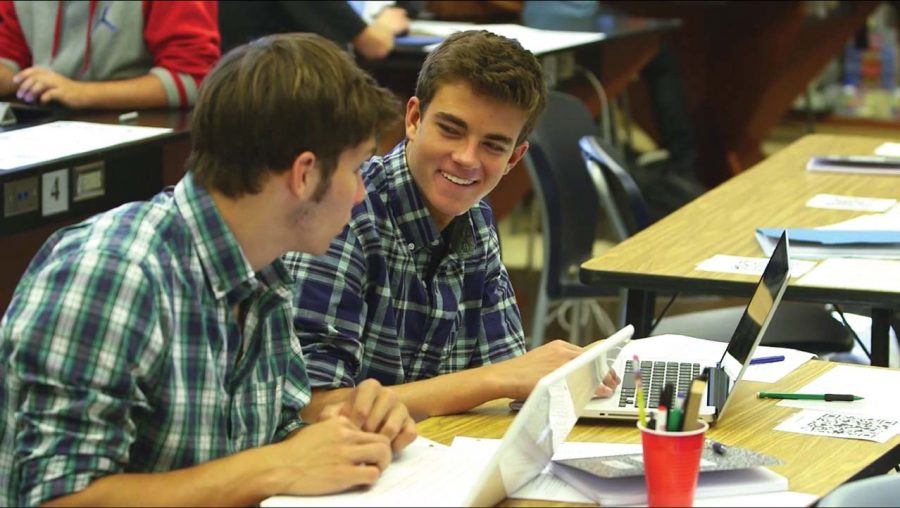The Tamalpais Union High School District (TUHSD) released a video, “Preparing Learners and Leaders for the 21st Century,” to parents and community members on November 19 as part of the district’s ongoing goal to uphold strategic priorities including “communication with the district’s internal and external stakeholders,” via various forms of media, according to district superintendent Laurie Kimbrel.

The video, which runs just over eight minutes and features footage from Tam, Redwood, Drake, San Andreas and Tamiscal, replaces an annual paper community report. Previous reports included financial information, individual school profiles, details about the school board and academic information such as standardized test performance and Academic Performance Index (API) scores.
“We decided to experiment with video, to see if we could get more people to watch a video than read something in print,” Kimbrel said. According to Kimbrel, the video, which is estimated to have cost the district about $8,000, will cost less than the roughly 15-page document previously distributed.
English and Academy of Integrated Humanities and New Media (AIM) teacher David Tarpinian, who was featured in the video, said that although he was unaware that the video would take the place of the annual community report, he felt the video format could be more widely viewed. “Video is a very effective way to communicate, as opposed to a newsletter,” Tarpinian said. “Probably more people are going to watch the video than read what’s in the newsletter, and that might precipitate stronger reactions.”
The new video focuses entirely on “21st Century Learning,” one aspect of the district’s mission statement, and the use of innovative teaching strategies and tools by educators in the district.
“The video was intended to address how some teachers and some classrooms are making sense of this mission statement for students,” Kimbrel said, emphasizing that the video aims to provide insight into a few classrooms and prompt community discussion, rather than to present a holistic view of the district.
Tarpinian agreed that the video depicted shifts in teaching method as one of many areas of focus in the district. “It’s a promotional film so its obviously going to put the best possible spin on what’s going on in the district,” he said. “I think it showcases a lot of the things that are happening and it gives some insight into the direction that the district would like to see certain things go—certainly not [for] everybody, but, you know, a more effective use of technology, more project-based.”
Government and independent living teacher David Rice was also featured in the video, both in footage of teacher leader meetings filmed in August and classroom footage filmed during a combined class session with Tarpinian. Rice said he thinks the video might serve as “a window into the Tam district to an outsider.” Rice, a member of the district’s Instructional Technology Teacher Collaborative (ITTC) program, utilizes project-based learning techniques in his classroom. Other teachers were highlighted for use of flipped teaching, Socratic seminar formats and integration of technology.
Senior Sarah Luster, who was interviewed for the video, agreed with its message of support for innovative learning methods. “It was easy [to answer] why project-based learning is better,” said Luster, a marine science student in April Tucker’s classroom, which utilizes flipped teaching and extensive technology integration. “[Project-based learning] is teaching us how to interact and work with other people to create and collaborate.”
Senior Lucas Janetos, another marine science student interviewed in the video, said that though he said he supported project-based learning in his interview, his personal views are slightly different. Janetos said he expressed a viewpoint that “wasn’t really genuine” in the video because the videographers “[gave] us a vibe that we should just say what they wanted to hear.”
Kimbrel said that student and teacher interviews in the video were selected to showcase “classrooms where teachers are delivering instruction in a little bit different way.” A less apparent theme of the video, according to Kimbrel, is that of curriculum, teacher collaboration and “how [teachers and administrators] will respond when students learn and don’t learn,” areas of ongoing focus in the district.
Kimbrel said that the district’s use of video in the future will depend on the success of this initial report. “There’s a lot of really, really amazing things happening at our schools that we just can’t put in an eight-minute video.”


